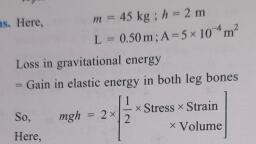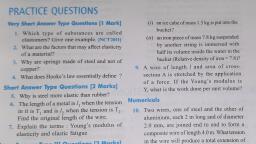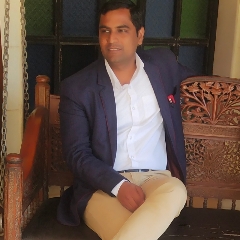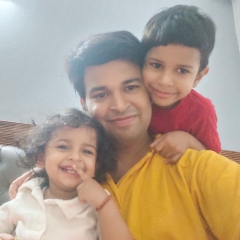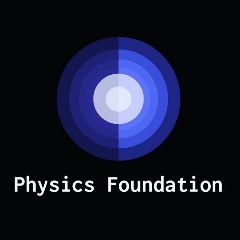Question 1 :
The refractive index of a diverging meniscus lens is 1.5 and its radii of curvatures are 20 cm, 25 cm. The focal power of the lens is:<br/>
Question 2 :
When a thin convex lens is put in contact with a thin concave lens of the same focal length, the resultant combination has focal length equal to :<br/>
Question 3 :
The least distance of distinct vision for a farsighted person is 1 m. The optical power of the lens of his specs which effectively reduces his LDDV to 25 cm, is
Question 4 :
An object is placed first at infinity and then at $20$ ${ cm }$ from the object-side focal plane of a convex lens. The two images thus formed are $5$ ${ cm }$ apart.The focal length of the lens is
Question 5 :
An object is placed at a distance $2 f$ from the pole of a convex mirror of focal length $f$. The linear magnification is:
Question 6 :
As the wavelength is increased from violet to red, the luminosity
Question 7 :
A convex lens of focal length 40 cm is in contact with a concave lens of focal length 25 cm. The power of he combination, is :
Question 8 :
Light enters an isosceles right triangular prism at normal incidence through face $AB$ and undergoes total internal reflection at face $BC$ as shown in the diagram:<br>The minimum value of the reflective index of the prism is close to :
Question 9 :
Assertion: A reflecting type telescope is preferred in astronomy.
Reason: Weight of the mirrors are less as compare the lenses.
Question 11 :
Two thin lens of focal lengths ${f}_{1}$ and ${f}_{2}$ are in contact. The focal length of this combination is
Question 12 :
A ray of light is incident on the surface of a glass plate of thickness $t$. If the angle of incidence $\theta$ is small, the emerging ray would be displaced side ways by an amount : [take $n =$ refractive index of glass].
Question 13 :
A coin is placed at the bottom of a beaker containing water (refractive index $= 4/3$) to a depth of $12 cm$. By what height the coin appears to be raised when seen from vertically above?
Question 14 :
A student focussed the image of a candle flame on a white screen using a convex lens. He noted down the position of the candle, screen and the lens with metre scale as under:<br/>Position of candle $= 12.0\ cm$<br/>Position of convex lens $= 50.0\ cm$<br/>Position of the screen $= 88.0\ cm$ Where will the image be formed if he shifts the candle towards the lens at a position of 31.0 cm ?<br/>
Question 15 :
A double convex lens of glass of $\mu_1.5$ has radius of curvature of each of its surface is $0.2\ m$. The power of the lens is
Question 16 :
A sound wave traveling with a velocity $V$ in a medium $A$ reaches a point on the interface of medium $A$ and medium $B$. If the velocity in medium $B$ is $2V$, then the angle of incident for the total internal reflection of the wave will be greater than:
Question 17 :
Two thin lenses having optical powers of $-10D$ and $+6D$ are placed in contact with each other. The focal length of the combination is:
Question 18 :
A convergent beam of light converges to a point 20 cm behind a concave lens on the principal axis. An inverted image of the same size is formed. An inverted image of the same size is formed. Then the focal length of the lens is then<br/>
Question 19 :
The value of numerical aperature of the objective lens of a microscope is $1.25$. If light of wavelength $5000 \mathring{A}$ is used, the minimum separation between two points, to be seen as distinct, will be :
Question 20 :
A convex lens form a real image of a point object placed on its principal axis. if the upper half of the lens is painted black,<br>







